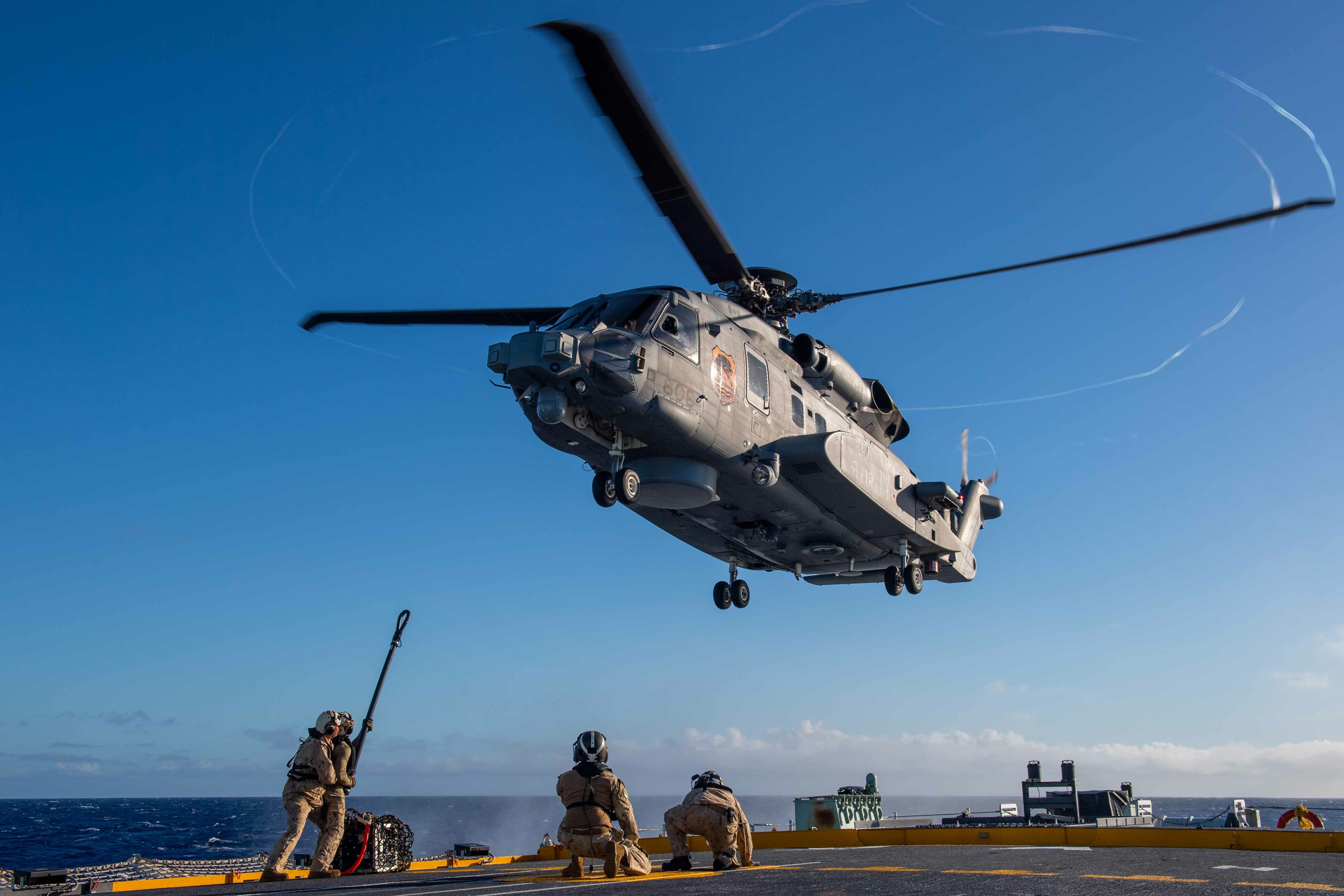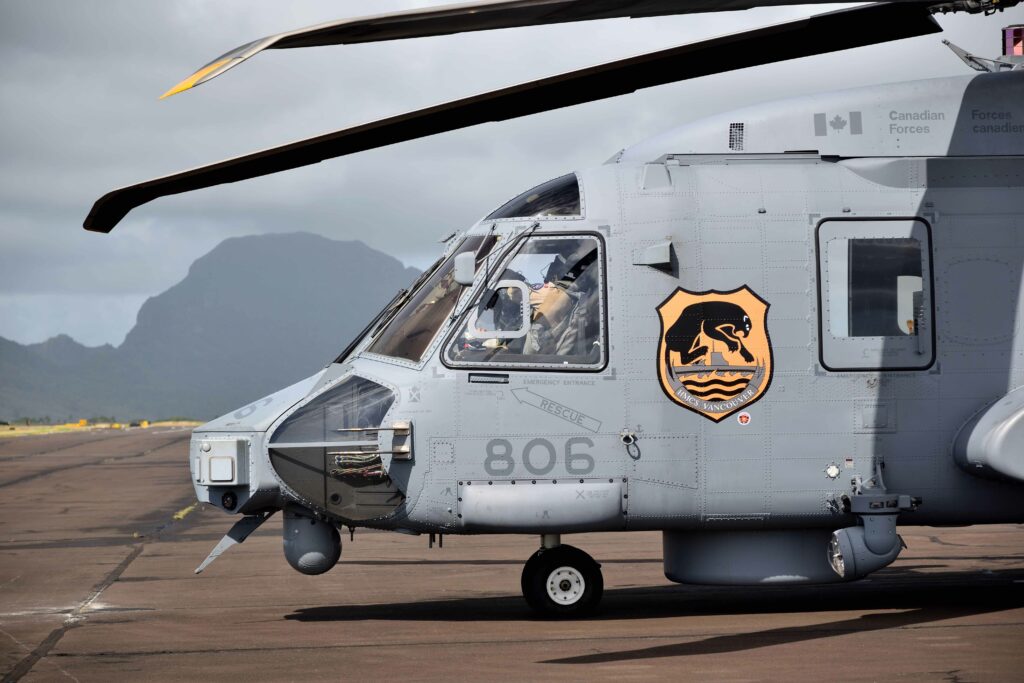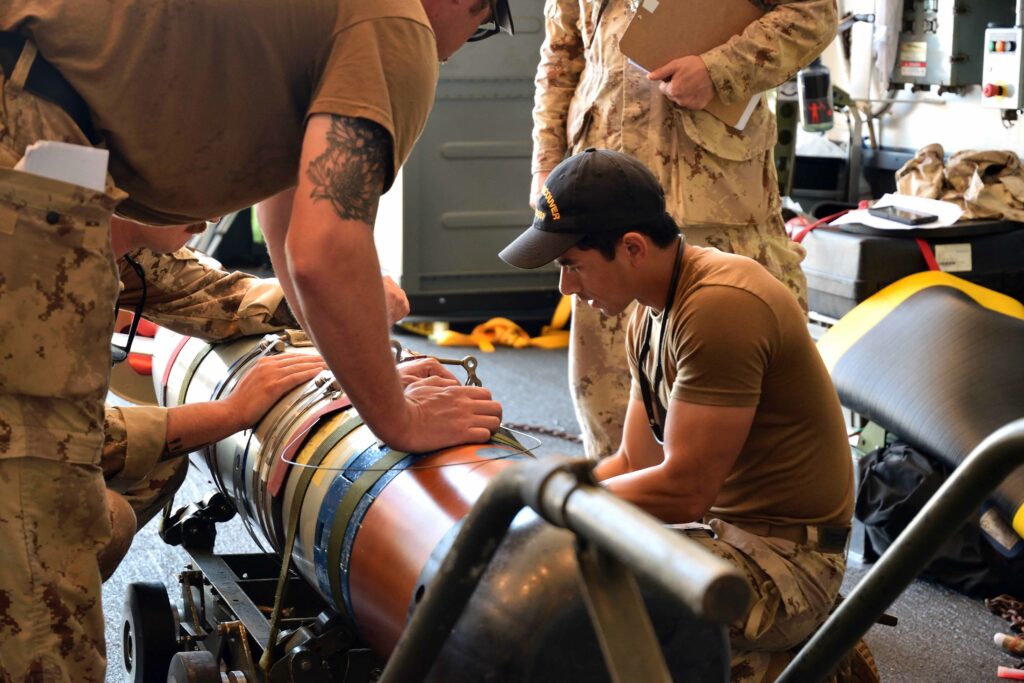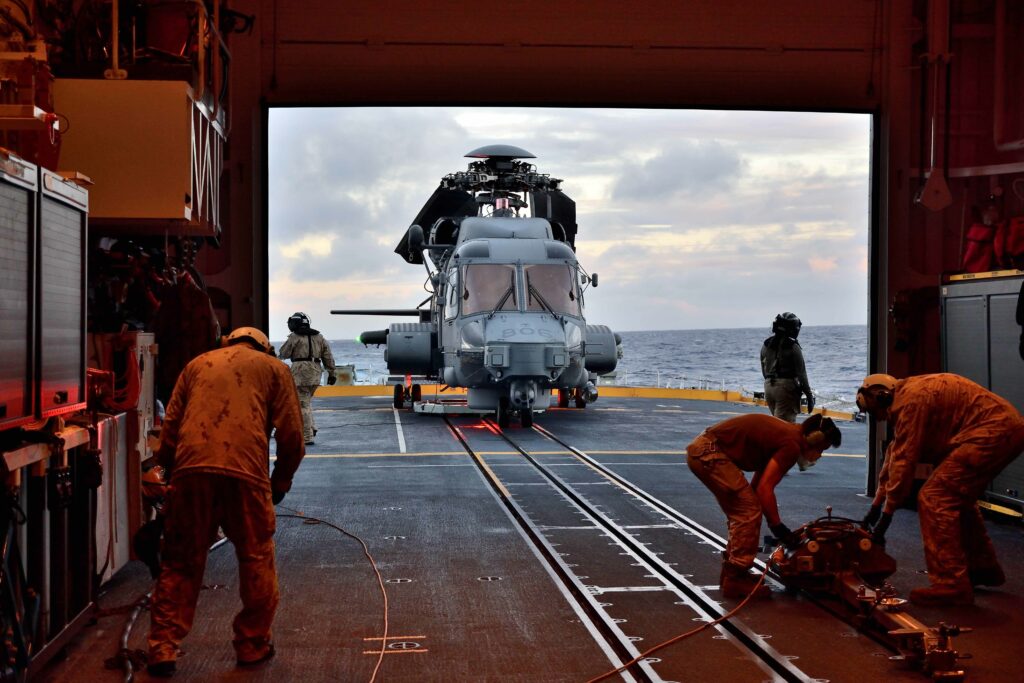Estimated reading time 17 minutes, 32 seconds.
When aircraft and ships participate in an exercise like Rim of the Pacific (RIMPAC), their crews arrive as well-formed units with hundreds of hours of collective training behind them. Not so the personnel of an Air Operations Centre (AOC). Though each member is highly trained in their trade, they are far from a unified team.
“It has to be built from scratch,” said BGen Mark Goulden. A Royal Canadian Air Force (RCAF) CC-130 Hercules pilot by trade, Goulden served as the commander of Combined Force Air Component Command for RIMPAC 2022, the world’s largest maritime exercise, held from late June to early August around the Hawaiian Islands and Southern California.
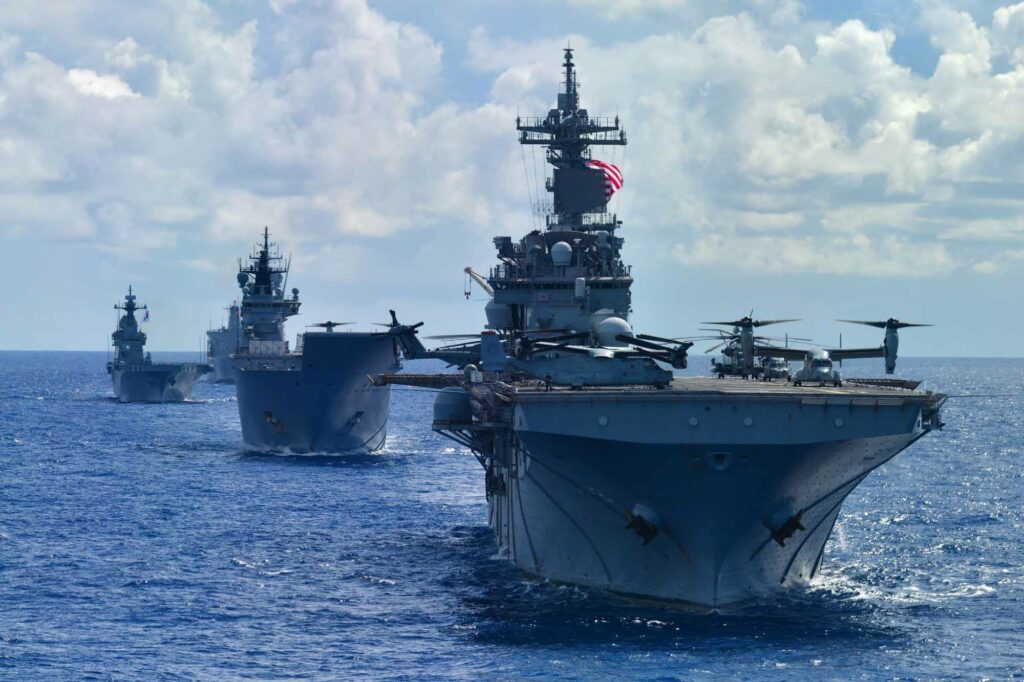
Knitting together about 140 personnel from four nations — the United States, Australia, New Zealand, and Canada — to form a tight unit tasked with the mission planning and command and control of around 170 aircraft from 26 nations — working in coordination with 38 surface ships, three submarines, nine national land forces, and more than 30 unmanned systems — is no small feat.
As the deputy command of Winnipeg, Manitoba-based 1 Canadian Air Division at the time, Goulden — who is now the director general of Air and Space Readiness in Ottawa — had experience operating in the hive of activity that is the RCAF’s Combined AOC. But he had never commanded anything on this scale.
“It’s been a great learning experience,” he said. “I’m an Air Mobility person by background, so working in that maritime environment with navies and air forces from around the world has certainly been a unique experience.”
The challenge of standing up an operations center on the fly was offset by the multinational expertise, including 50 Canadians, surrounding him. While few had worked together before, all understand the concept of an AOC and many had “experience within their own AOCs, whether at home or abroad on operations,” noted Goulden. That helped create an “effective team very quickly.”
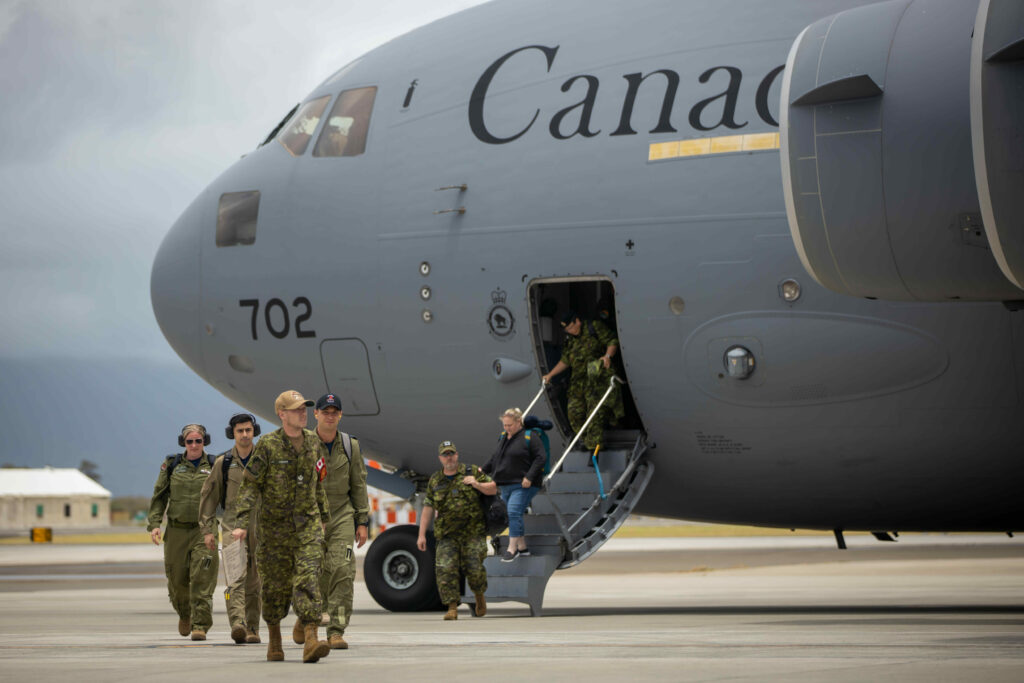
That rapid integration within a single organization epitomized the RIMPAC ‘22 theme of “Capable Adaptive Partners.” From the vantage point of the AOC, Goulden saw the seamless command and control of air, maritime, and land components from multiple countries in complex scenarios.
“It speaks to the adaptive nature of our forces around the world,” he said. “That is what impressed me the most — how quickly we formed and how effective we were throughout the exercise.”
Following a scaled down version of RIMPAC in 2020, the theme was appropriate. After two years of a global pandemic and rising tensions in Eastern Europe and in the East and South China Seas, the exercise was a first opportunity for many to participate in a massive multinational training event and to demonstrate the agility and adaptive strength of Western forces.
RIMPAC unfolded in a series of phases intended to gradually bring participants up to combat readiness. For the AOC staff, the initial “harbor phase” provided the breathing room to build relationships in the newly formed operations center and better understand the range of capabilities “we can bring to bear,” said Goulden, former commander of 8 Wing Trenton.
Once the naval ships sailed, the exercise quickly transitioned through an advanced phase into a tactical one that soon progressed to full scale war at sea. The process allowed the air component to integrate with maritime partners and establish relationships with air forces and navies “that maybe you don’t always work with . . . [and] start building up tactics through training so [we] can better integrate together,” explained Goulden.
The training and air coordination included helicopter operations in support of humanitarian assistance and disaster relief; aerial gunnery from A-10 Thunderbolts and AC-130 gunships; aerial refuelling of carrier fighters by U.S. Air Force KC-135 and U.S. Marine Corps KC-130 tankers; anti-piracy with aerial surveillance from MQ-9 Reapers; anti-submarine warfare by CP-140 Auroras and other maritime patrol aircraft; personnel recovery from a simulated downed aircraft; and, lastly, a SINKEX of two retired vessels that required well-coordinated airspace and a synchronized handoff between aircraft and surface vessels as they targeted and fired on the ships.
“Everyone was able to test their procedures, [and] their ability to find and prosecute a target throughout the day,” said Goulden. “That’s the impressive part of this, that you’re able to deliver that lethal effect if you need to — whether it be from maritime forces or air forces or land forces. This is training you just can’t replicate anywhere else.”
RIMPAC finished with an amphibious assault demonstration. Goulden referred to it as the “crowning event,” involving almost all assets “that showed how we can integrate all these different capabilities in one objective,” and how well the AOC can “deliver effects desired by the Maritime Component Commander to enhance their operations.”
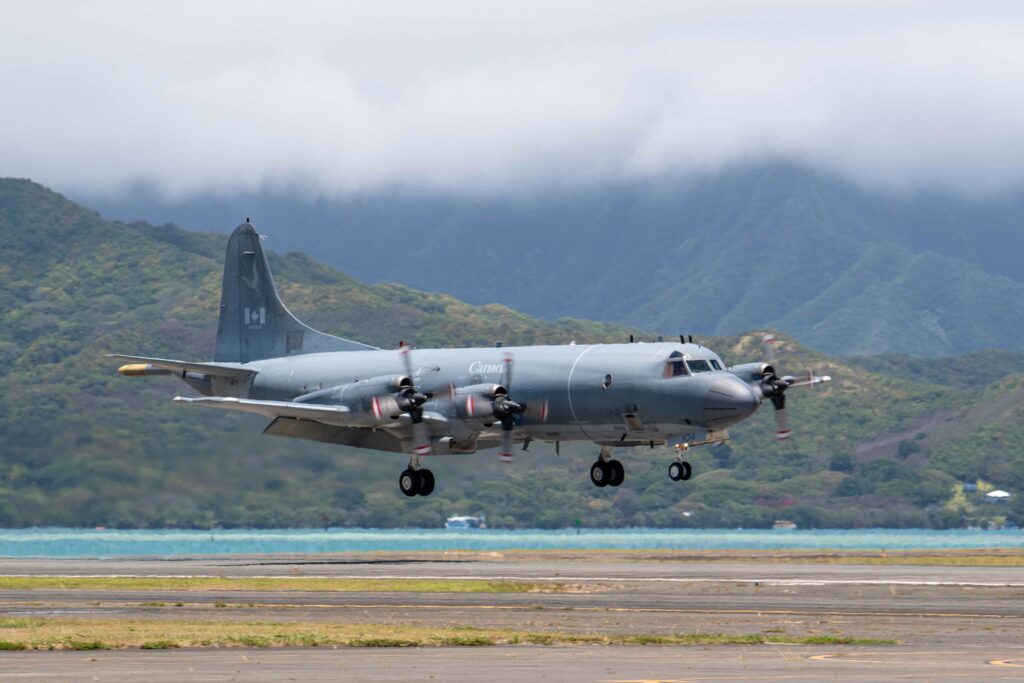
CP-140: PROVEN INTEROPERABILITY
For the CP-140 Aurora detachment, the incremental approach of RIMPAC allowed the aircrews to transition from detecting and tracking a single submarine, to coordinating with surface vessels, to theater anti-submarine warfare (ASW) “with increasing levels of complexity” and, finally, war at sea, explained Maj Andy Holden, the detachment commander and a flight commander with 407 Long Range Patrol Squadron at 19 Wing Comox, British Columbia.
“By that tactical phase, all of your various components have come together into one massive war game,” he said.
Like the AOC, integration with other partners occurred quickly. As assets for the Combined Task Force or theater ASW commanders, the Auroras were “working with the ships from [Singapore, Japan, or Canada] as our air control unit,” said Holden. “We could be working with the sea combatant commander as well, reacting to calls of submarine contacts. It was fully integrated in the tactical sense. Every time we worked with those units it was seamless to us.”
The modernized CP-140’s sub hunting abilities are well known. In February, a crew from 407 Squadron defended the coveted Dragon’s Belt, topping teams from the United States Navy, Royal Australian Air Force, Indian Navy, Japan Maritime Self-Defense Force, and Republic of Korea Navy in an ASW exercise called Sea Dragon. At RIMPAC, they were again working alongside some of those same partners, handing over subsurface tracks as they sought to prosecute targets.
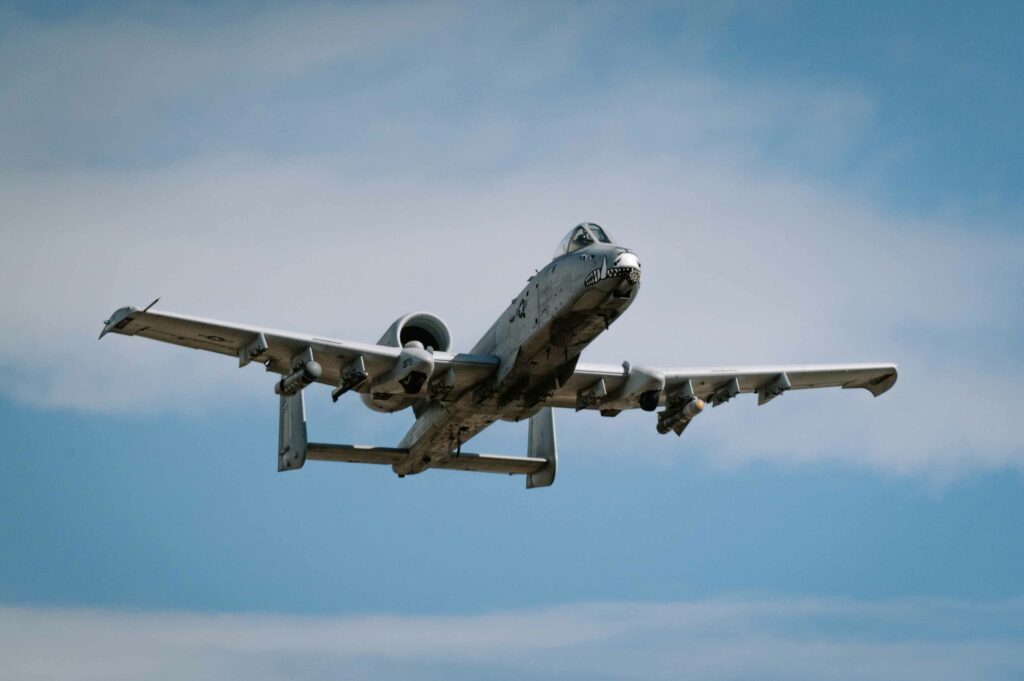
“We have proven that we’re interoperable with each other,” said Holden, a 28-year veteran of the Royal Air Force, who flew the Hawker Siddeley Nimrod before transferring to the RCAF in 2012. He has since instructed and conducted test and evaluation flights on the Aurora.
The RCAF long-range patrol community had targeted RIMPAC as the operational debut for the Block IV Aurora, the final phase of a 20-year capability upgrade program to the aircraft. (Instead, Block IV aircraft were deployed in April for Op Caribbe, a counter-narcotics operation in the Caribbean Sea and eastern Pacific Ocean.) 407 Squadron still operates the Block III aircraft, and while new capabilities such as high-bandwidth, beyond-line-of-sight satellite communications, and Link 16 tactical data exchange network access would have been useful, their absence did not hinder the aircrews.
“We can do the job without Link 16,” noted Holden, “but if we had Link 16 it would certainly add to our situational awareness.”
The detachment of around 65 personnel included two aircrews and a team of around 23 technicians to keep two Auroras flying throughout the exercise. “We had over 95 percent serviceability, which is a highlight,” he said.

While the squadron’s focus was primarily on RIMPAC scenarios, the exercise also served as an opportunity to complete phase checks and annual proficiency checks. “The biggest thing for me [was] the experience and training gained by my junior operators on an exercise of this scale that we just can’t replicate at home,” said Holden. “It’s been invaluable for those guys.”
CH-148: LANDING WITH NEW PARTNERS
Working with the CP-140s in the hunt for submarines were, at times, Helicopter Air Detachments (HELAIRDETs) of two CH-148 Cyclones from HMCS Winnipeg and HMCS Vancouver, two Halifax-class frigates. As with the Aurora crews, ease of interoperability with so many partners was an overriding feature of RIMPAC.
“Everyone works in their own bubble with their own military, but when you get out to these exercises, where you’re surrounded by dozens of other [militaries] that have slightly different ways of operating, we all come together,” observed Capt Tyler Molloy, an air combat systems officer and tactical coordinator for the HELAIRDET on HMCS Vancouver.
“Our kits work together, our acronyms are pronounced a little differently, but we all can figure out what we’re talking about; [we can] perform these operations, not just in the planning, but tactically.

“When we’re flying, I’m able to communicate with MH-60R Seahawks from [the Royal Australian Navy] or the U.S. Navy,” added Molloy. “We’re able to figure out the situation, build a good formation, and prosecute submarines. It’s really cool.”
Molloy attended RIMPAC in 2020 and said the difference was evident from the outset. “The scale of this exercise was way more complex. From a flying perspective, it was more interesting for me to see how we can work with everybody. I was reporting to a lieutenant commander from New Zealand, who was on an American ship.”
Enroute to RIMPAC, the Vancouver sailed with a Chilean Type 23 frigate, the CNS Almirante Lynch, and the two took turns landing helicopters on each other’s flight decks. “As far as I’m aware, it’s the first time we have landed a Cyclone on [a Chilean frigate and vice versa],” said pilot Capt Dan Simpson.
The initial phases of the exercise included several small trials and experiments with partners, such as radar data collection for electronic warfare tactics, said Molloy. “The Vancouver and our HELAIRDET did a ton of warfare trials. We did anti-submarine warfare trials . . . before we joined the [tactical phase] and the war at sea.”
The ASW training included operations with the Winnipeg and a CP-140 crew, “tracking and prosecuting American nuclear submarines,” added Simpson.

RIMPAC had a decidedly different flavor for the crew of the Vancouver. Representing the notional nation of Orion, they played the red force during the war at sea scenario and put a lot of effort into being the enemy.
“Usually, calls are very formal, but we would end them with ‘Glory to Orion’ and talk about the ‘evil’ RIMPAC,” Simpson joked. “It was something that the ship really picked up and had a lot of fun with.”
Instead of enforcing a treaty, “we were the ones breaking it,” noted Molloy, “but to the [HELAIRDET] that was all transparent; it was more in the ops room and in the planning stages. We flew the missions as we normally would, we just had different radio frequencies than the good guys for the most part.”
The CH-148 is still ramping up to full operational capability, and both crewmembers highlighted the stability, performance, and other strengths of the platform.
“The Cyclone has come quite a long way, at least in my experience,” said Molloy. “We’re on the datalink, we’re using all the modern sensors and communications that the Cyclone can offer, and we’re learning how to use them to their full potential.”
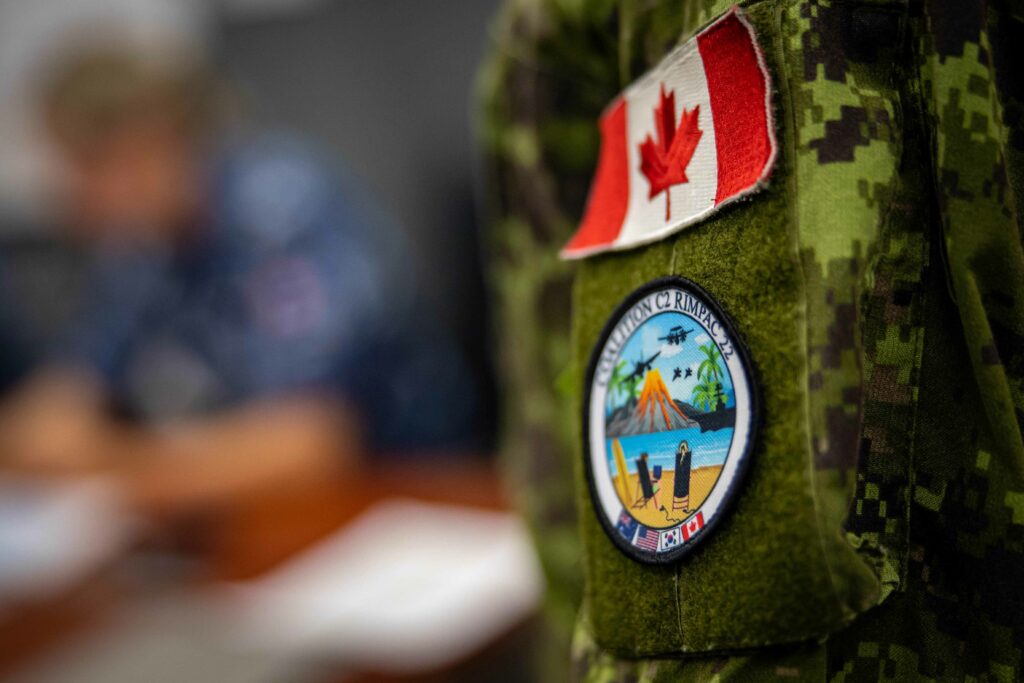
“[They] achieved some amazing objectives in proving that aircraft,” said Goulden of the CH-148 crews. “The Cyclone is a developing capability and, without getting into details, they were able to test and prove some really unique capabilities.”
NO ONE ELSE COULD DO THIS
While the pandemic has abated, it was still present on the exercise.
“People did come down with Covid, but we demonstrated that we could continue operations uninterrupted, with no effect on the exercise or capabilities,” said Goulden. “Again, another demonstration and validation for ourselves that we can work through this and still be a very formidable force.”
Holden added: “At the tactical level, we did have some issues with key personnel getting Covid on this exercise, but those events were not canceled. They were either taken up by my other crew, or by other nations to fulfill those slots to maintain the 24/7 coverage.”
Though there was an initial learning curve integrating various capabilities after a two-year absence of such comprehensive training, what impressed all the RCAF participants was how quickly they resolved any issues. As RIMPAC progressed, air and maritime components better understood how they could assist one another.
“We saw in some of the maritime events, they would call over and say, ‘Hey, what can you do from a surveillance perspective? We need to survey this space over the water,’” said Goulden. “We were able to turn assets over there and provide those effects in a very effective manner to achieve those objectives. I learned a lot in terms of integration, between an air component and maritime component.
“The talent these nations bring [is] incredibly motivated and capable,” he concluded. “The demonstration of power — 38 ships, four submarines, 170 aircraft and . . . 25,000 people — is impressive. No one else in the world could do this. It’s absolutely humbling, to say the least, and something I’ll always remember.”
